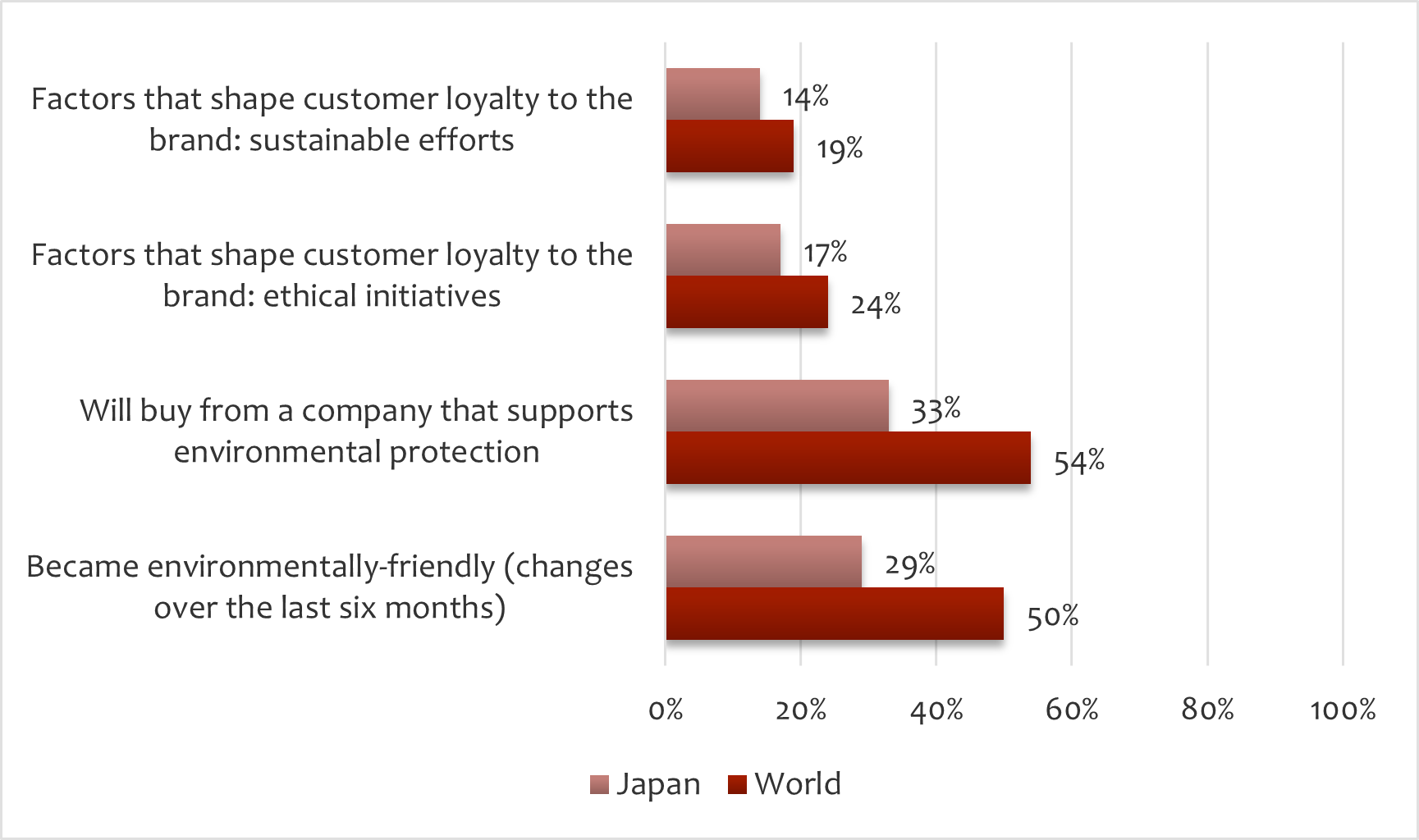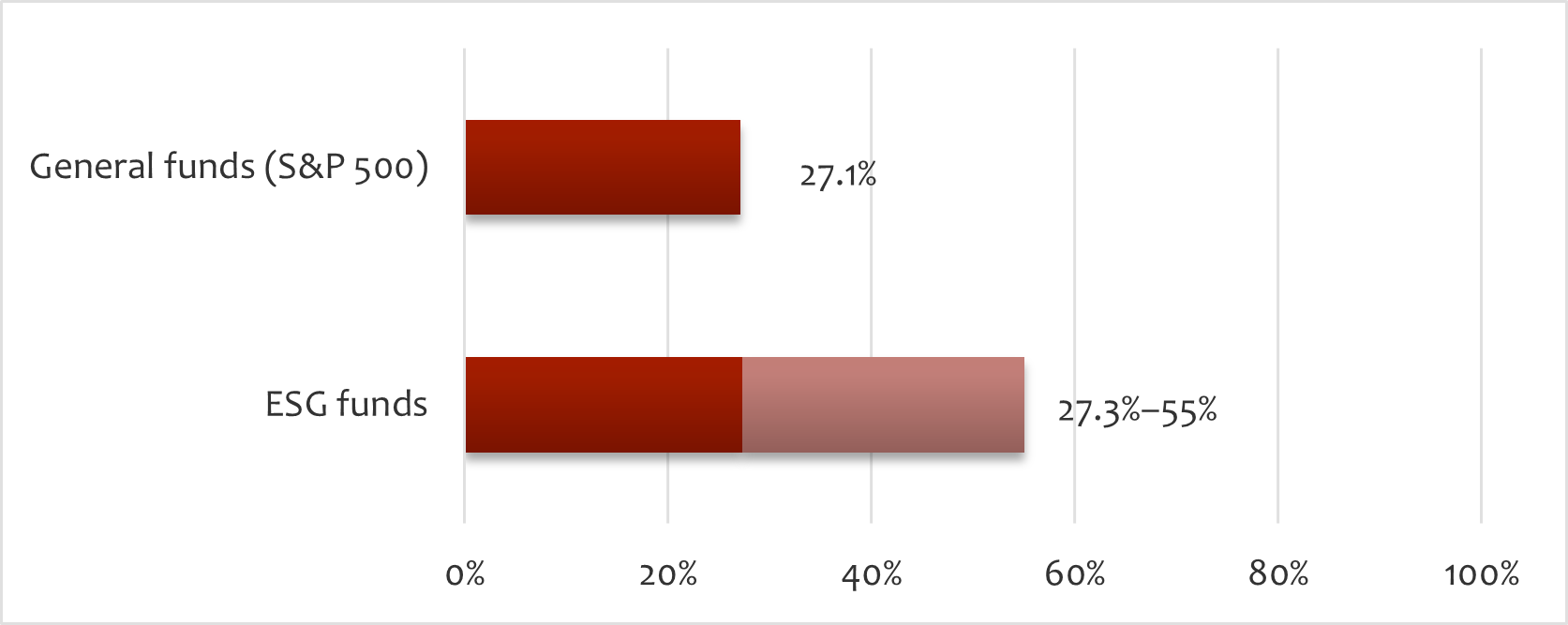
Corporate Resilience in the Face of the Pandemic
March 8, 2022
C-2021-001-7-WE
A resilient company is able to readily adapt to external shocks and can turn adversity into an opportunity for growth. CSR expert Miho Murashima identifies the internal and external assets that contribute to corporate resilience and notes they may be acquired by practicing “mindful” management.”
1. Introduction
The COVID-19 pandemic has had great social and economic repercussions around the world. According to the International Monetary Fund’s World Economic Outlook, April 2021, economic growth in 2020 was −3.3% worldwide and −4.8% in Japan; the figures, it added, would have been even worse without fiscal stimulus from various governments. Although stimulus packages and the administering of vaccines are expected to have restored positive growth to the global economy in 2021, many after-effects, including wider disparities between developed and developing countries, are expected to persist. In the 2021 CEO Pulse Survey, conducted by KPMG in February and March 2021 of 500 CEOs in 11 major markets, nearly half (45%) of respondents answered that a return to “normal” would not occur in 2021. Additionally, customers and investors tend to change their environmental and social values as shocks and risks increase (Gualtieri et al. 2019). As shown in Figure 1, the Global Consumer Insights Pulse Survey of June 2021, conducted by PwC among 8,681 consumers worldwide, found that 50% of consumers had become “more environment-friendly” in the past six months.
Figure 1. Global Consumer Insights Pulse Survey, June 2021
Source: Created by the author based on PwC’s June 2021 Global Consumer Insights Pulse Survey (accessed September 6, 2021).
The percentage of consumers who are more environment-friendly is lower in Japan than in the rest of the world, but it is still about a third of the population; it is thus clear that there is a sizable number of Japanese consumers who are making environmentally conscious choices. Meanwhile, in recent years, corporate social initiatives, including CSR activities, have become an important consideration for investors around the world in the form of ESG investments. One reason for this is the expectation that such initiatives will lead to enhanced resilience (Friede et al. 2015).
Resilience denotes a company’s adaptability in the face of environmental change and its ability to remain unfazed in the face of external social and economic shocks—using them, in fact, to fuel growth. Figure 2 shows that investors bought more shares in companies that are highly regarded for their ESG activities than in general companies during the COVID-19 pandemic, highlighting the importance of corporate resilience. In the following, I will examine how the relationship between socially responsible initiatives and corporate resilience will change in response to the COVID-19 pandemic.
Figure 2. Price Growth of ESG Funds and General Funds during the COVID-19 Pandemic, May 2020–May 2021
Source: Created by the author based on S&P Global, “ESG funds beat out S&P 500 in 1st year of COVID-19; how 1 fund shot to the top” (accessed September 6, 2021).
2. What Is Resilience?
Resilience refers to a company’s ability to resist various external shocks. Although there are many aspects to this notion, I define it as “the ability of a company to recover from and adapt to environmental change” in this article. More specifically, it refers to the capacity of a company to continue operating and achieve further growth without confronting financial difficulties in the face of external social and economic shocks. Resilience can be enhanced through both (1) internal resources (employees, financial soundness, R&D assets) and (2) external networks (supply chain, customers, investors).
(1) Enhancing Internal Factors
The internal factors that contribute to enhanced resilience include the resources a business can use to overcome external social and economic shocks, namely, (1) employees, (2) financial soundness, and (3) R&D assets.
Employees form the core of corporate activity, with the quality and productivity of human resources having a direct bearing on earnings. From the perspective of resilience, the two most important considerations in the face of external social or economic shocks are “employee retention” and “product development capability.” “Employee retention” is synonymous with employee loyalty to the company (attachment, trust). In other words, when external shocks force changes in working environments and conditions, it will be a critical factor for survival and growth whether skilled employees remain with the company. “Product development capability” refers to the ability of employees to create new products and services. In an emergency, the ability of employees to overcome difficult situations and turn adversity into opportunity will be a determining factor for the success of subsequent corporate operations.
Financial soundness in the form of a high capital adequacy ratio and sufficient liquidity is another important factor in strengthening resilience. Even if sales and income plummet due to external shocks, a financially sound company may be able to withstand the crisis without defaulting.
R&D assets consist of the ability to come up with ideas for new products and services and the technical skills to turn those ideas into actual products and services as a company. The COVID-19 pandemic has resulted in major changes in people’s lifestyles. However, businesses can use adversity as a source of growth if they quickly devise and bring new products and services to market in response to those changes.
(2) Social Responsibility and External Networks
External resources that strengthen resilience consist of links to the outside world that enable a company to survive during an emergency. I will focus on three such resources, namely, (1) supply chains, (2) customer loyalty, and (3) investor relations.
Supply chains are crucial, as evidenced by the slowdown or suspension of production at many companies following the March 2011 Great East Japan Earthquake and the COVID-19 pandemic due to supply chain disruptions. The impact was particularly pronounced in the auto industry, which procures raw materials and parts from all over Japan and the world. These experiences have shown that strengthening resilience requires building a supply chain of transaction partners that can be relied upon even in times of tragic external shocks.
Building good relations with customers will result in strong customer loyalty. The pandemic has had a huge impact on people’s mental and financial well-being. Loyal customers, however, would keep purchasing specific brands despite heightened anxiety and reduced income, allowing the company to avoid a drastic decline in sales and revenue.
The same can be said for the relationship with investors, as good investor relations will mean strong investor loyalty. This will be an important advantage in the event of a major market shock, preventing a selloff of the company’s stock and securing its position as a safe investment destination.
3. Companies with a Positive Social Reputation Will Survive
How does a company’s social reputation relate to the various factors that determine resilience? Recent empirical studies have shown that companies recognized for their socially responsible activities have lower financial risks and are more resilient to social and economic challenges (Brodback et al. 2019; Hoepner et al. 2016; Ortas et al. 2014). In addition, Friede et al. (2015) found after a review of 2,200 academic studies that most of them pointed to a positive relationship between corporate ESG ratings and financial performance.
I will first examine the issue from the perspective of internal factors. With regard to employees, Edmans (2011, 2012) suggests that companies with a positive social reputation will continue to attract high-quality employees and motivate them by giving them a sense of purpose, thereby increasing overall productivity. The more positive the social impact of the company, the higher the level of job satisfaction among employees. In addition, sustainable and responsible management strategies can minimize the financial risk of a company when a crisis occurs (Ortas et al. 2014), enabling it, for example, to secure needed funds even in the face of a credit crunch. Studies have shown that the higher a company’s social reputation, the greater its ability to create new value (Broadstock et al. 2020; Hull and Rothenberg 2008). Companies’ efforts to ensure that their products and services meet society’s expectations can boost their ability to both develop and give shape to innovations.
External networks have also been found to be positively correlated with a company’s social reputation. Most CSR and ESG assessments include questions on the soundness of a business’s supply chain, gauged by whether suppliers resort to negative practices, such as child labor, forced labor, or environmental pollution. As a result, companies with a positive social evaluation will inevitably have a sustainable supply chain and be able to reassure customers and investors that their strategies are consistent with social expectations and thus sustainable (Galbreath 2013; Lai et al. 2016; Sison et al. 2019; Suchman 1995).
In other words, companies can improve their standing and image in the eyes of customers, thereby cultivating fans, by actively engaging in socially responsible activities. This may allow the company to forego having to wage a price war even when there is a sudden drop in demand. In fact, many companies are stepping up their efforts to engage in such activities as a differentiation strategy (Albuquerque et al. 2019, 2020). Like customers, investors also regard socially responsible companies as reliable organizations with stable management policies. In other words, companies can foster investor loyalty through their social initiatives and prevent selloffs of the company’s shares in the event of an external shock (Albuquerque et al. 2020). An empirical study conducted by Murashima (2020) found a positive correlation between CSR activities and a company’s share prices.
4. Practicing “Mindful Management”
How can a business be managed so that it remains resilient, allowing it to grow even under adversity? A keyword that has been cropping up in recent years is “mindfulness,” which can be defined as a state of being “attentive and aware of one’s surroundings,” a concept in line with CSR and stakeholder theory. Originally used in religious and meditative contexts, it is now used by businesspeople as part of their stress management, as a way to “focus on the present and accept things as they are.” As used by businesses, “mindfulness” has either or both of these meanings.
It was Sheth et al. (2011) who introduced the association between “mindfulness” and business in advocating the concept of “mindful consumption”—a proposal to mitigate modern society’s self-destructive overconsumption by taking greater care of ourselves, our communities, and the environment when purchasing goods and services. Since then, the idea of “mindfulness” has been used in all aspects of business and has gained renewed attention amid the COVID-19 pandemic.
The concept of “mindful organizing” is an effective strategy for strengthening the internal factors that contribute to resilience. Ndubisi and Shuridah (2019) classified mindful organizing into two categories: principles and operations. The former includes (1) a commitment to resilience by ascertaining problems quickly and rapidly incorporating countermeasures in strategy; (2) a deference to expertise and the delegation of decision-making to the most appropriate specialists, regardless of employment position (including janitors and sewage workers); (3) an ongoing awareness of hazards and vulnerabilities throughout management and understanding their impact; (4) vigilance against oversimplification, such as immediately attributing problems to external or localized causes; and (5) a sensitivity to onsite operation methods (Ndubisi and Shuridah 2019; Weick and Sutcliffe 2001).
The operational aspects of mindful organizing imply extensive and continuous real-time communication and complementary relationships in teams (Mcphee et al. 2006; Ndubisi and Shuridah 2019; Vogus and Sutcliffe 2012). This can give employees, for example, a sense of self-esteem and allow them to freely express their opinions on how to deal with problems, helping improve the productivity and quality of employees and fostering their loyalty to the company. In addition, management’s ability to quickly ascertain problems and identify hazards and vulnerabilities will contribute to financial soundness. Further, new ideas can be encouraged by establishing an open office environment where the management team is proactive in identifying problems and values the opinions of all staff.
“Mindful management of relationship” can also be used to strengthen the supply chain and other external sources of resilience (Zafari et al. 2020). This involves building a strong relationship of trust with business partners to avert potential breakdowns in the relationship by (1) trusting the partner, (2) remaining alert to potential problems, (3) verifying any issues, and (4) adjusting the relationship as appropriate through constant awareness and consideration of the other party. This will allow the parties to maintain a high degree of mutually complementary ties in the event of strong external shocks, such as a major earthquake or pandemic, and to work together to deal with the crisis.
Another strategy aimed at fostering customer loyalty is “mindful marketing,” which, according to Hagenbuch and Mgrdichian (2020), is an effective and ethical marketing strategy that meets the needs of companies and their customers without producing negative outcomes for themselves and other stakeholders. Based on the values of decency, fairness, honesty, respect, and responsibility, the company can win the trust of customers and create a solid brand by ensuring that its marketing practices do not have negative consequences. This strategy can also be applied to gain the trust of investors.
“Mindful management” can thus be said to be about building and maintaining good relationships with all stakeholders. Just as it takes time and effort to build a broad and strong network of personal relations, companies must similarly endeavor to secure networking assets. Mindfully pausing to bring awareness and attention to the impact of a company’s actions and requests from stakeholders will surely enable the organization to adapt and become more resilient in the face of external disruptions.
References
Albuquerque, R., Y. Koskinen, and C. Zhang (2019), “Corporate Social Responsibility and Firm Risk: Theory and Empirical Evidence,” Management Science 65, pp. 4451–4469. https://doi.org/10.1287/mnsc.2018.3043.
Albuquerque, R., Y. Koskinen, S. Yang, and C. Zhang (2020), “Resiliency of Environmental and Social Stocks: An Analysis of the Exogenous COVID-19 Market Crash,” The Review of Corporate Finance Studies 9, pp. 593–621. https://doi.org/10.1093/rcfs/cfaa011.
Broadstock, D.C., R. Matousek, M. Meyer, and N.G. Tzeremes (2020), “Does Corporate Social Responsibility Impact Firms’ Innovation Capacity? The Indirect Link between Environmental and Social Governance Implementation and Innovation Performance,” Journal of Business Research 119, pp. 99–110. https://doi.org/10.1016/j.jbusres.2019.07.014.
Brodback, D., N. Guenster, and D. Mezger (2019), “Altruism and Egoism in Investment Decisions,” Review of Financial Economics 37, pp. 118–148. https://doi.org/https://doi.org/10.1002/rfe.1053.
Edmans, A. (2011), “Does the Stock Market Fully Value Intangibles? Employee Satisfaction and Equity Prices,” Journal of Financial Economics 101, pp. 621–640. https://doi.org/10.1016/j.jfineco.2011.03.021.
Edmans, A. (2012), “The Link between Job Satisfaction and Firm Value, With Implications for Corporate Social Responsibility,” Academy of Management Perspectives 26, pp. 1–19. https://doi.org/10.5465/amp.2012.0046.
Friede, G., T. Busch, and A. Bassen(2015), “ESG and Financial Performance: Aggregated Evidence from More Than 2000 Empirical Studies,” Journal of Sustainable Finance and Investment 5, pp. 210–233. https://doi.org/10.1080/20430795.2015.1118917.
Galbreath, J. (2013), “ESG in Focus: The Australian Evidence,” Journal of Business Ethics 118, pp. 529–541. https://doi.org/10.1007/s10551-012-1607-9.
Gualtieri, G., M. Nicolini, and F. Sabatini (2019), “Repeated Shocks and Preferences for Redistribution,” Journal of Economic Behavior and Organization 167, pp. 53–71. https://doi.org/https://doi.org/10.1016/j.jebo.2019.09.016.
Hagenbuch, D.J. and L.M. Mgrdichian (2020), “Mindful Marketing: A Strategy-based, Branded Approach for Encouraging Ethical Marketing,” Marketing Education Review 30, pp. 15–28. https://doi.org/10.1080/10528008.2019.1686993.
Hoepner, A.G.F., I. Oikonomou, Z. Sautner, L.T. Starks, and X. Zhou (2016), “ESG Shareholder Engagement and Downside Risk,” SSRN Electronic Journal. https://doi.org/10.2139/ssrn.2874252.
Hull, C.E. and S. Rothenberg (2008), “Firm Performance: The Interactions of Corporate Social Performance with Innovation and Industry Differentiation,” Strategic Management Journal 29, pp. 781–789. https://doi.org/10.1002/smj.675.
Lai, A., G. Melloni, and R. Stacchezzini (2016), “Corporate Sustainable Development: Is ‘Integrated Reporting’ a Legitimation Strategy?” Business Strategy and the Environment 25, pp. 165–177. https://doi.org/10.1002/bse.1863.
McPhee, R.D., K.K. Myers, and A. Trethewey (2006), “On Collective Mind and Conversational Analysis: Response to Cooren,” Management Communication Quarterly 19, pp. 311–326.
Murashima, M. (2020), “Do Investors’ Reactions to CSR-Related News Communication Differ by Shareholder? An Empirical Analysis from Japan,” Corporate Governance: The International Journal of Business in Society 20, pp. 781–796. https://doi.org/10.1108/CG-11-2019-0346.
Ndubisi, N.O. and O. Al-Shuridah (2019), “Organizational Mindfulness, Mindful Organizing, and Environmental and Resource Sustainability,” Business Strategy and the Environment 28, pp. 436–446. https://doi.org/10.1002/bse.2219.
Ortas, E., J.M. Moneva, R. Burritt, and J. Tingey-Holyoak (2014), “Does Sustainability Investment Provide Adaptive Resilience to Ethical Investors? Evidence from Spain” Journal of Business Ethics 124, pp. 297–309. https://doi.org/10.1007/s10551-013-1873-1.
Sheth, J.N., N.K. Sethia, and S. Srinivas (2011), “Mindful Consumption: A Customer-centric Approach to Sustainability,” Journal of the Academy of Marketing Science 39, pp. 21–39. https://doi.org/10.1007/s11747-010-0216-3.
Sison, A.J.G., I. Ferrero, and G. Guitián (2019), “Characterizing Virtues in Finance,” Journal of Business Ethics 155, pp.995–1007. https://doi.org/10.1007/s10551-017-3596-1.
Suchman, M.C. (1995), “Managing Legitimacy: Strategic and Institutional Approaches,” The Academy of Management Review 20, pp. 571–610.
Vogus, T.J. and K.M. Sutcliffe (2012), “Organizational Mindfulness and Mindful Organizing: A Reconciliation and Path Forward,” Academy of Management Learning and Education 11, pp. 722–735.
Weick, K. E. and K. M. Sutcliffe (2001), Managing the Unexpected, San Francisco: Jossey-Bass.
Zafari, K., S. Biggemann, and T. Garry (2020), “Mindful Management of Relationships during Periods of Crises: A Model of Trust, Doubt and Relational Adjustments,” Industrial Marketing Management 88, pp. 278–286. https://doi.org/10.1016/j.indmarman.2020.05.026.
